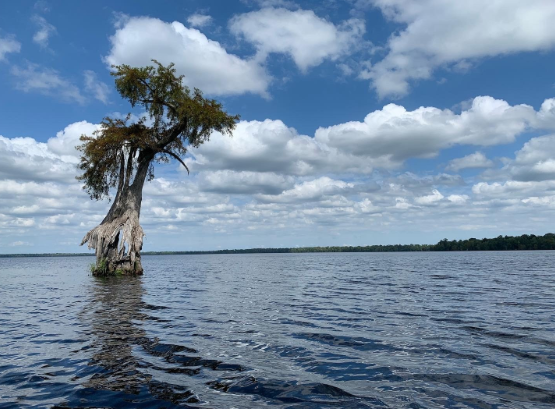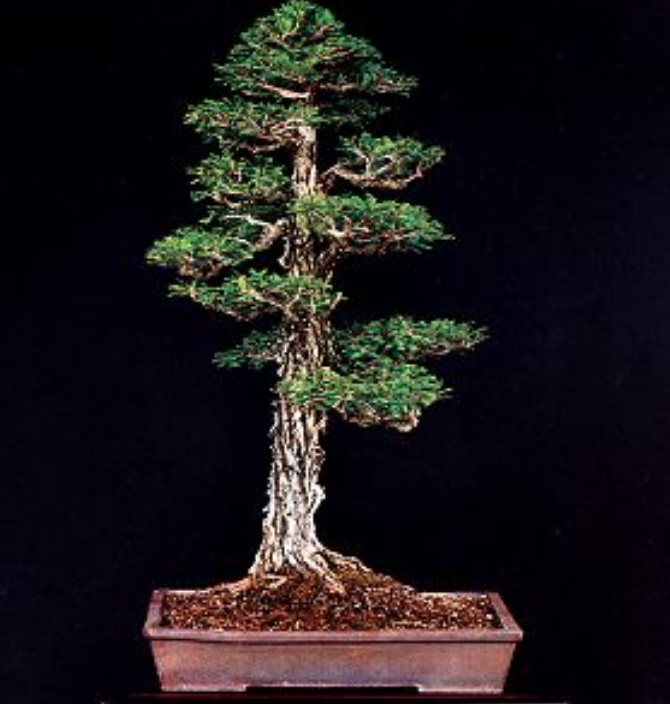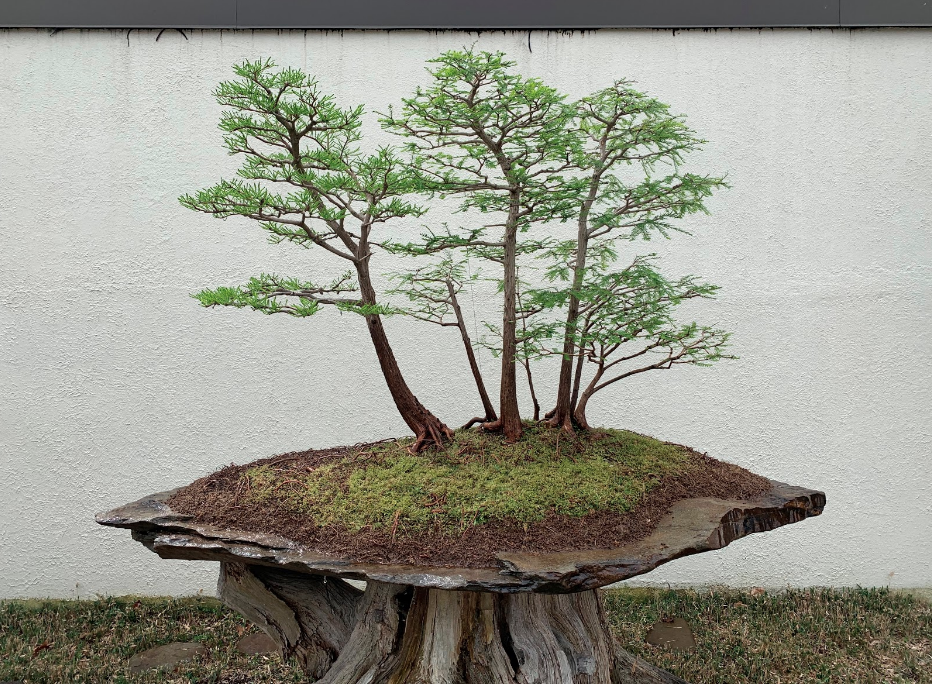An ikebana display titled “Resilience” by the Sogetsu school
Ikebana International Washington, D.C. Chapter No. 1 held its first outdoor exhibit at the U.S. National Arboretum this spring.
Ikebana, or the Japanese art of flower arrangement, has been a complementary art to bonsai for decades. Chapter One has held an indoor exhibit at the National Bonsai & Penjing Museum for more than 20 years, but this year’s exhibition needed a different venue due to the Museum’s temporary closure during the COVID-19 pandemic.
While hundreds of schools dedicated to the art of ikebana exist, seven schools are represented in Chapter One. The group’s president and this year’s exhibition chair – Ursula Kondo and Jean Rieg, respectively – spoke with the National Bonsai Foundation.
A relative of her husband’s coworker first introduced Kondo to ikebana. While she has always loved flowers, Kondo was drawn to the asymmetrical design of Japanese arrangements, which are similar to the floral styles in her home country of Germany. Kondo originally joined the local Houston chapter of Ikebana International before moving and enlisting in the Washington, D.C. chapter.
Rieg’s artistic roots are in teaching scrapbooking and cake decorating. She often took many trips to gardens around the United States and abroad due to her mother’s love of flowers. A friend introduced her to ikebana as another creative outlet, and Rieg started studying with Bruce Wilson, the lead of Chapter One’s Saga Goryu ikebana school. She also attended classes for three years at Saga Goryu Headquarters in Japan and will continue those trips once the pandemic ends
About one year after beginning classes, Rieg became the host coordinator of the annual exhibition, which led to her appointment as chair this past year.
“Ikebana has become an important part of my life, and I find it an incredible artform,” she said. “A lot of people find great joy in seeing arrangements and understanding which schools they are derived from.”
Rieg added that each group produced incredible pieces, especially considering that only one of the six schools that participated this year had ever worked on outdoor arrangements.
Sogetsu team co-leader Marjorie Bauman (left) and member Catherine Macauley (right) work on an arrangement.
This year’s exhibition was both virtual and physical – two groups of 30 arrangements can be seen online, and 13 arrangements were available for viewing at the U.S. National Arboretum but are now online as well.
“We make sure to have arrangements from every school in our chapter so people can see the difference between the arrangements and styles,” Rieg said.
The artists received basic directions on display details, like permitted dimensions, but the concept of each piece was largely left to individual inspiration. Most of the teams crafted arrangements to celebrate the anticipated end to the COVID-19 pandemic, titling their pieces with terms like “awakening” or “reawakening.”
Rieg said planning for this hybrid exhibition began in the fall of 2020. She saw a video exhibition that an ikebana chapter in San Francisco produced and thought a variation on that idea would work well for Chapter One. Rieg tested the concept with the chapter in a December Area Workshop with holiday arrangements. Teachers approved the students’ arrangements.
“We were worried how the public would react to the outdoor arrangements, but the exhibit was very well received, everyone was in awe of the arrangements,” Kondo said.
“Breaking Out of the Pandemic” – Sangetsu school “Reawakened” – Ichiyo school
For the outdoor arrangements, the creators had to consider elements present in the natural environment when designing their prototypes and choosing their materials. Each display featured a QR code that viewers could scan with their phones to learn more about the ikebana schools, the materials used in the arrangements and general information on the art form.
“The Ichiyo school used a lot of bamboo stakes for their arrangement,” Kondo said. “The creators made notches in the bamboo and wired them together so it didn’t fall apart in the wind.”
While the design process took a couple of months, each exhibit was completely assembled on the Arboretum grounds in just one day. Rieg said the teachers conceived the original designs, but both students and teachers executed the projects. Each team comprised three-to-five students and could work in a designated 8-foot by 5-foot area.
“We tried to position the arrangements so each could have its day in the light, and it was worth it because the whole exhibition was so well-received by visitors,” Kondo said. “Everyone was impressed with the exhibition and delighted with the opportunity to view it at the Arboretum.”
Rieg said Chapter One wanted the exhibition to demonstrate the period of transition the world is in as it slowly emerges from lockdowns and restrictions instated for safety during the pandemic.
“We wanted it to be a reawakening and spark interest in viewers,” she said. “Every good effort has a good outcome. We succeeded because of the artistry and skill within the chapter and the great support we got from the Arboretum, so everything worked out very well.”
You can learn more about Ikebana International Chapter One on their website and follow them on Facebook.
The Ikenobo team (L to R: Valeria Shishkin, Reiko Royston & Team Lead Kyoko Peterson) next to their arrangement “Manifestation of Life and Beauty”
















